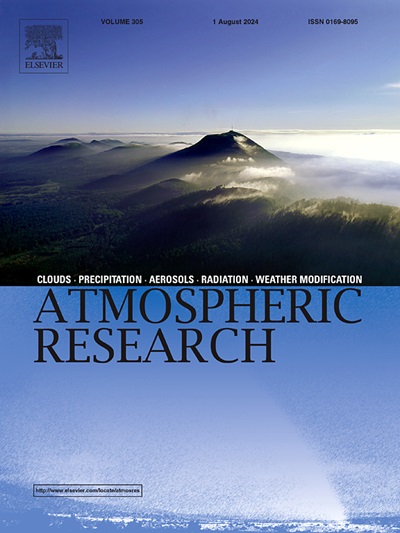Dynamic prediction of PM2.5 concertation in China using experience replay with multi-period memory buffers
IF 4.5
2区 地球科学
Q1 METEOROLOGY & ATMOSPHERIC SCIENCES
引用次数: 0
Abstract
PM2.5 pollution is a significant contributor to both respiratory and cardiovascular diseases. An aging population is more sensitive to air pollution. Hence accurately predicting PM2.5 concentrations is crucial for safeguarding public health in an aging society. Machine learning is one of the key research methods in the field of PM2.5 concentration short-term forecasting. However, existing short-term forecasting methods often prioritize model improvements, while overlooking the fundamental patterns of PM2.5 concentration data. Utilizing only the temporally closest observations cannot take full advantage of the information provided by historical datasets. Wavelet analysis of datasets in this study revealed the periodic components in PM2.5 concentrations. Building on this periodic variation, we proposed an experience replay strategy that integrates both a long-term and a short-term memory buffer to enhance PM2.5 concentration prediction. The long-term memory buffer stores historical events that are similar to the current pollution scenario, providing the model with a stable historical reference. Meanwhile, the short-term memory buffer captures exceptional samples that are challenging to predict, thus ensuring greater adaptability in scenarios with high variability and uncertainty. The next three-day 5 km PM2.5 concentration grid-prediction experiment was carried out on four typical models in 2020 across China. The results show that the proposed experience replay strategy significantly improv es prediction accuracy on all models. By repeatedly replaying the stored experience, the model progressively strengthens its generalization ability and prediction accuracy, particularly in complex, dynamic, and pollution-prone environments. The proposed approach in this study will contribute to public health protection and environmental management.
求助全文
约1分钟内获得全文
求助全文
来源期刊

Atmospheric Research
地学-气象与大气科学
CiteScore
9.40
自引率
10.90%
发文量
460
审稿时长
47 days
期刊介绍:
The journal publishes scientific papers (research papers, review articles, letters and notes) dealing with the part of the atmosphere where meteorological events occur. Attention is given to all processes extending from the earth surface to the tropopause, but special emphasis continues to be devoted to the physics of clouds, mesoscale meteorology and air pollution, i.e. atmospheric aerosols; microphysical processes; cloud dynamics and thermodynamics; numerical simulation, climatology, climate change and weather modification.
 求助内容:
求助内容: 应助结果提醒方式:
应助结果提醒方式:


